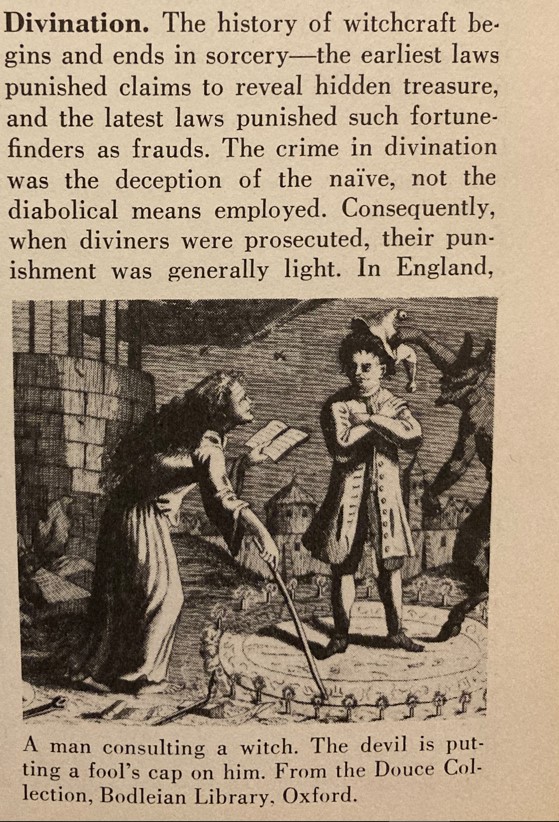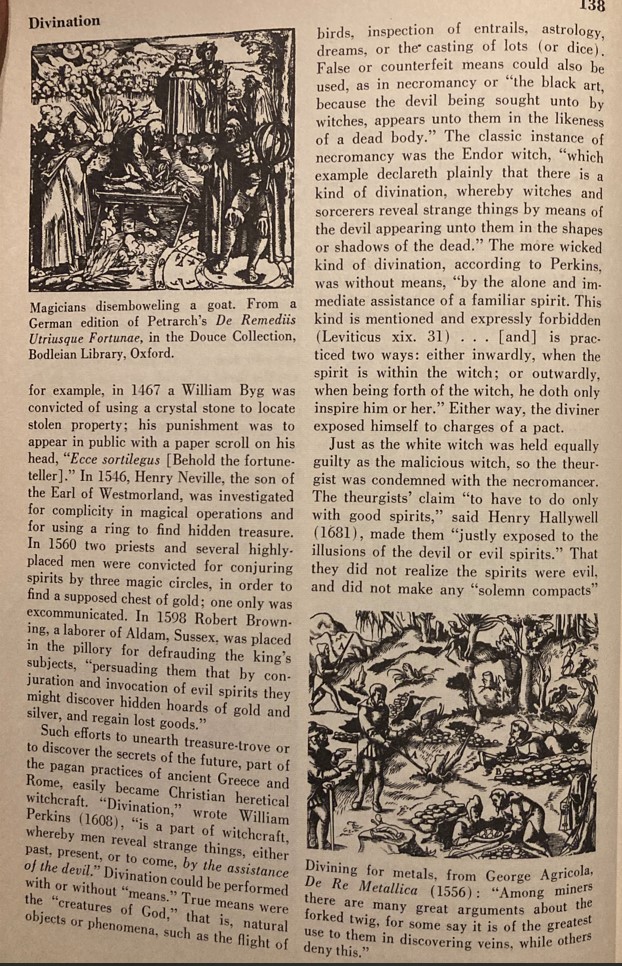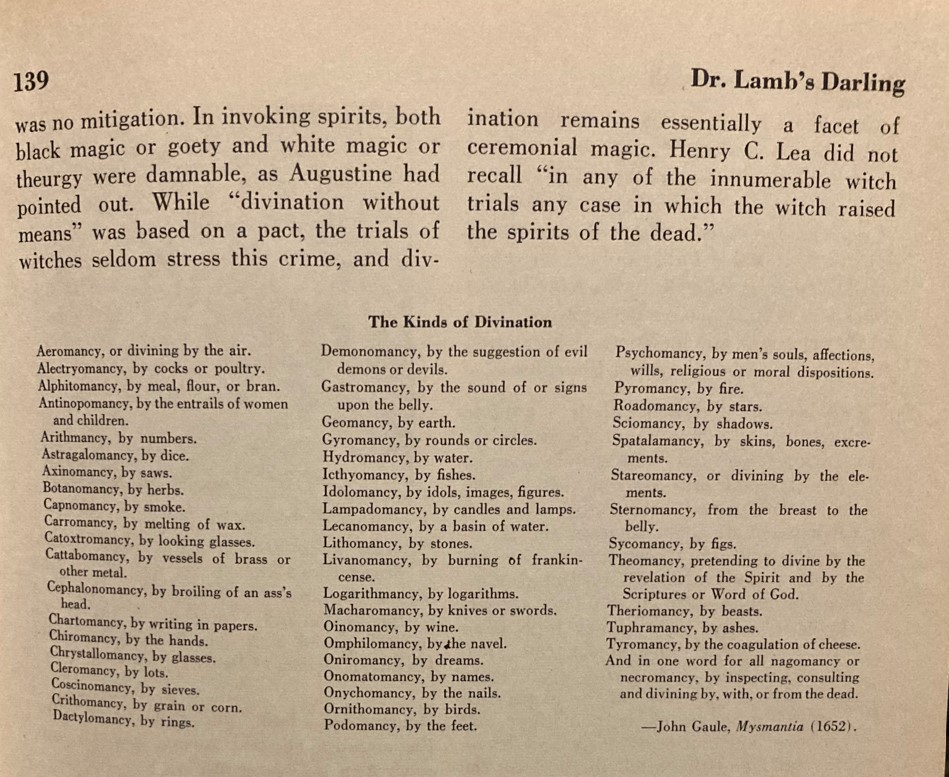Rossell Hope Robbins gives a historical over of divination, including a discussion of the use of instruments such as objects and natural phenomena.
- Type
- Book
- Source
- Rossell Hope Robbins Non-LDS
- Hearsay
- Secondary
- Reference
Rossell Hope Robbins, The Encyclopedia of Witchcraft and Demonology (New York: Crown Publishers, Inc., 1959), 137-39
- Scribe/Publisher
- Crown Publishers, Inc.
- People
- Rossell Hope Robbins
- Audience
- Reading Public
- Transcription
Divination. The history of witchcraft begins and ends in sorcery—the earliest laws punished claims to reveal hidden treasure, and the latest laws punished such fortune-finders as frauds. The crime in divination was the deception of the naïve, not the diabolical means employed. Consequently, when diviners were prosecuted, their punishment was generally light. In England, for example, in 1467 a William Byg was convicted of using a crystal stone to locate stolen property; his punishment was to appear in public with a paper scroll in his head, “Ecce sortilegus [Behold the fortune-teller].” In 1546 Henry Neville, the son of the Earl of Westmorland, was investigated for complicity in magical operations and for using a ring to find hidden treasure. In 1560 two priests and several highly-placed men were convicted for conjuring spirits by three magic circles, in order to find a supposed chest of gold: one only was excommunicated. In 1598 Robert Browning, a laborer of Aldam, Sussex, was placed in the pillory for defrauding the king’s subjects, “persuading them that by conjuration and invocation of evil spirits they might discover hidden hoards of gold and silver, and regain lost goods.”
Such efforts to unearth treasure-trove or to discover the secrets of the future, part of the pagan practices of ancient Greece and Rome, easily became Christian heretical witchcraft. “Divination,” wrote William Perkins (1608), “is a part of witchcraft, whereby men reveal strange things, either past, present, or to come by the assurance of the devil.” Divination could be performed with or without “means.” True means were the “creatures of God,” that is, natural objects or phenomena, such as the flight of birds, inspection of entrails, astrology, dreams, or the casting of lots (or dice). False or counterfeit means could also be used as in necromancy or “the black art, because the devil being sought unto by witches, appears unto them in the likeness of a dead body.” The classic instance of necromancy was the Endor witch, “which example declareth plainly that there is a kind of divination, whereby witches and sorcers reveal strange things by means of the devil appearing unto them in the shapes or shadows of the dead.” The more wicked kind of divination, according to Perkins, was without means, “by the alone and immediate assistance of a familiar spirit. This kind is mentioned and expressly forbidden (Leviticus xix. 31) . . . [and] is practised two ways: either inwardly, when the spirit is within the witch; or outwardly, when being forth of the witch, he doth only inspire him or her.” Either way, the diviner exposed himself to charges of a pact.
Just as the white witch was held equally guilty as the malicious witch, so the theurgist was condemned with the necromancer. The theurgists’ claim “to have to do only with good spirits,” said Henry Hallywell (1681), made them “justly exposed to the illusions of the devil or evil spirits.” That they did not realize the spirits were evil, and did not make any “solemn compacts” was no mitigation, IN invoking spirits, both black magic or goety and white magic or theurgy were damnable, as Augustine had pointed out. While “divination without means” was based on a pact, the trials of witches seldom stress this crime, and divination remains essentially a facet of ceremonial magic. Henry C. Lea did not recall “in any of the unnumerable witch trails any case in which the witch raised the spirits of the dead.”
- Citations in Mormonr Qnas
The B. H. Roberts Foundation is not owned by, operated by, or affiliated with the Church of Jesus Christ of Latter-day Saints.



